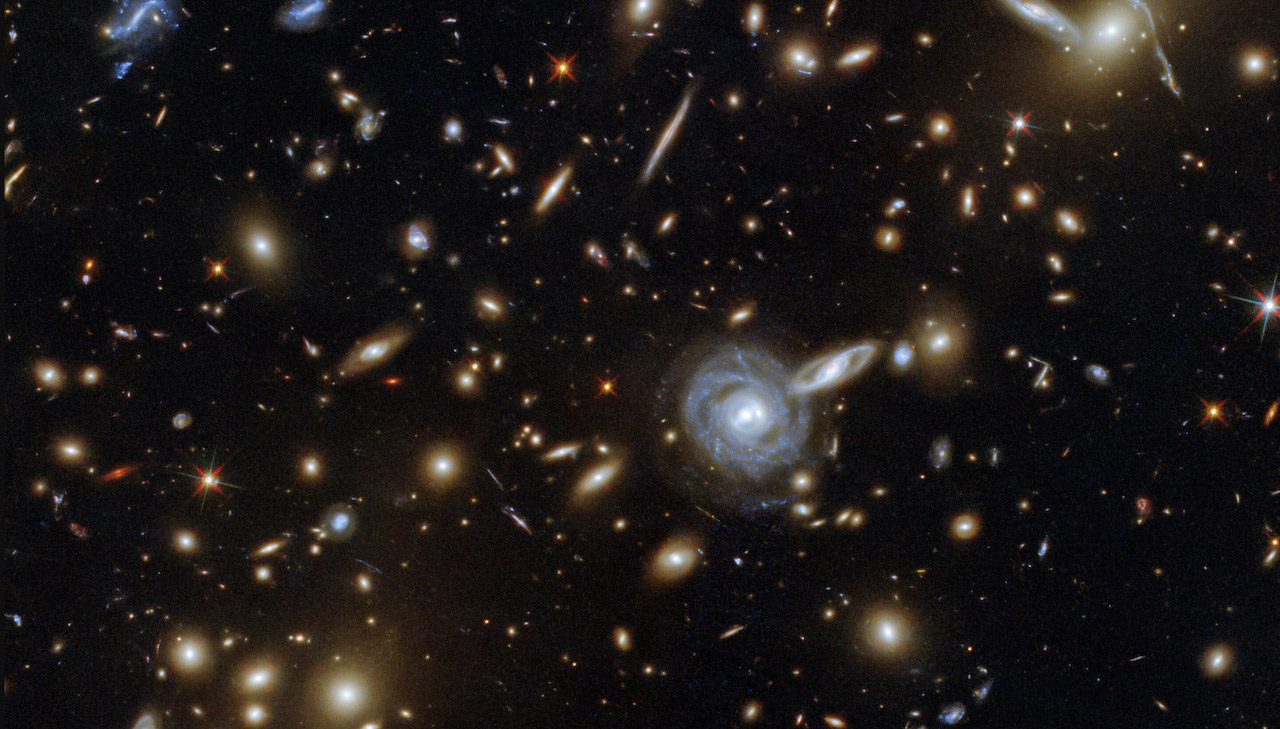Hubble tension

The rate at which the universe is expanding is known as the Hubble constant and it's one of the key factors in understanding the evolution and ultimate fate of the cosmos. But astronomers have been troubled by a persistent discrepancy between the value of the constant, measured in various different ways, and its value predicted from the afterglow of the Big Bang.
This discrepancy is called the Hubble tension. Thanks to NASA's James Webb Space Telescope we now have a powerful new tool for exploring if the tension is real or not.
The brightness of certain stars tells us how far away they are and therefore how long their light has been traveling to reach us. The redshifts of the galaxies the stars are in tell us how much the universe has expanded over that time, which in turn gives us the expansion rate.
For more than a century, stars known as Cepheid variables have given us the most precise way of measuring cosmic distances. Cepheids are supergiants with about a 100,000 times the luminosity of the Sun. What's more, they pulsate with a period that's related to their luminosity. The longer the period, the greater their intrinsic brightness. They're the gold standard for measuring the distances of galaxies that are a hundred million or more light-years away. Unfortunately, stars in distant galaxies appear crowded together from where we are, so the Cepheids are hard to separate from their neighbours.
A major justification for building the Hubble Space Telescope was to solve this problem. Before Hubble's launch in 1990, the expansion rate of the universe was so uncertain that astronomers weren't sure if the expansion had been going on for 10 billion or 20 billion years. Hubble has better resolution at visible wavelengths than any ground-based telescope. So it can identify individual Cepheid variables in galaxies that are more than a 100 million light-years away and measure the period of their brightness changes.
But we also need to observe Cepheids in the near-infrared part of the spectrum to see the light from them which isn't affected by intervening dust. Hubble's red-light vision isn't as sharp as its blue, so the Cepheid light we see is blended with that of other stars in the same field of view. We can account for the average amount of blending, statistically, but that makes the measurements more uncertain.
Sharp infrared vision is one of the Webb Space Telescope's strengths. With its large mirror and sensitive optics, it can separate the Cepheid light from neighboring stars. In the first year of its operation, astronomers collected observations of Cepheids found by Hubble at two steps along what's known as the cosmic distance ladder. The first step involves observing Cepheids in a galaxy with a known distance that allows the calibration of the true luminosity of Cepheids.
The second step is to observe Cepheids in the host galaxies of recent Type Ia supernovae. The combination of the first two steps gives the distance to the supernovae so we can calibrate their true luminosities. Step three is to observe those supernovae far away where the expansion of the universe can be measured by comparing the distances inferred from their brightness and the redshifts of the host galaxies. This sequence of steps is known as the cosmic distance ladder.
Recently, researchers got their first measurements by the Webb Telescope from steps one and two, which allowed them to complete the distance ladder and compare it with the previous measurements from Hubble. They looked at more than 320 Cepheids across the first two steps and confirmed that the earlier Hubble measurements were accurate, albeit noisier. They also observed four more distant supernovae with Webb and saw a similar result for the whole sample.
What the results still don't explain is why the universe appears to be expanding so fast. Astronomers can predict the expansion rate by observing the cosmic microwave background and then using their best model of how it grows over time to tell then how fast the universe should be expanding today. The fact that the present measure of the expansion rate is significantly larger than the prediction is the Hubble tension.
The most exciting possibility is that the tension is a clue about something we're missing in our understanding of the cosmos. It may indicate the presence of dark energy, dark matter, a revision to our understanding of gravity, or the presence of a unique particle or field. A more mundane explanation would be multiple measurement errors conspiring in the same direction, so that's why it's important to redo the measurements with greater precision.
Having confirmed the measurements from Hubble, the Webb measurements provide the strongest evidence yet that systematic errors in Hubble's Cepheid photometry don't play a significant role in the present Hubble tension. As a result, the more interesting possibilities remain on the table and the mystery of the Tension deepens.

